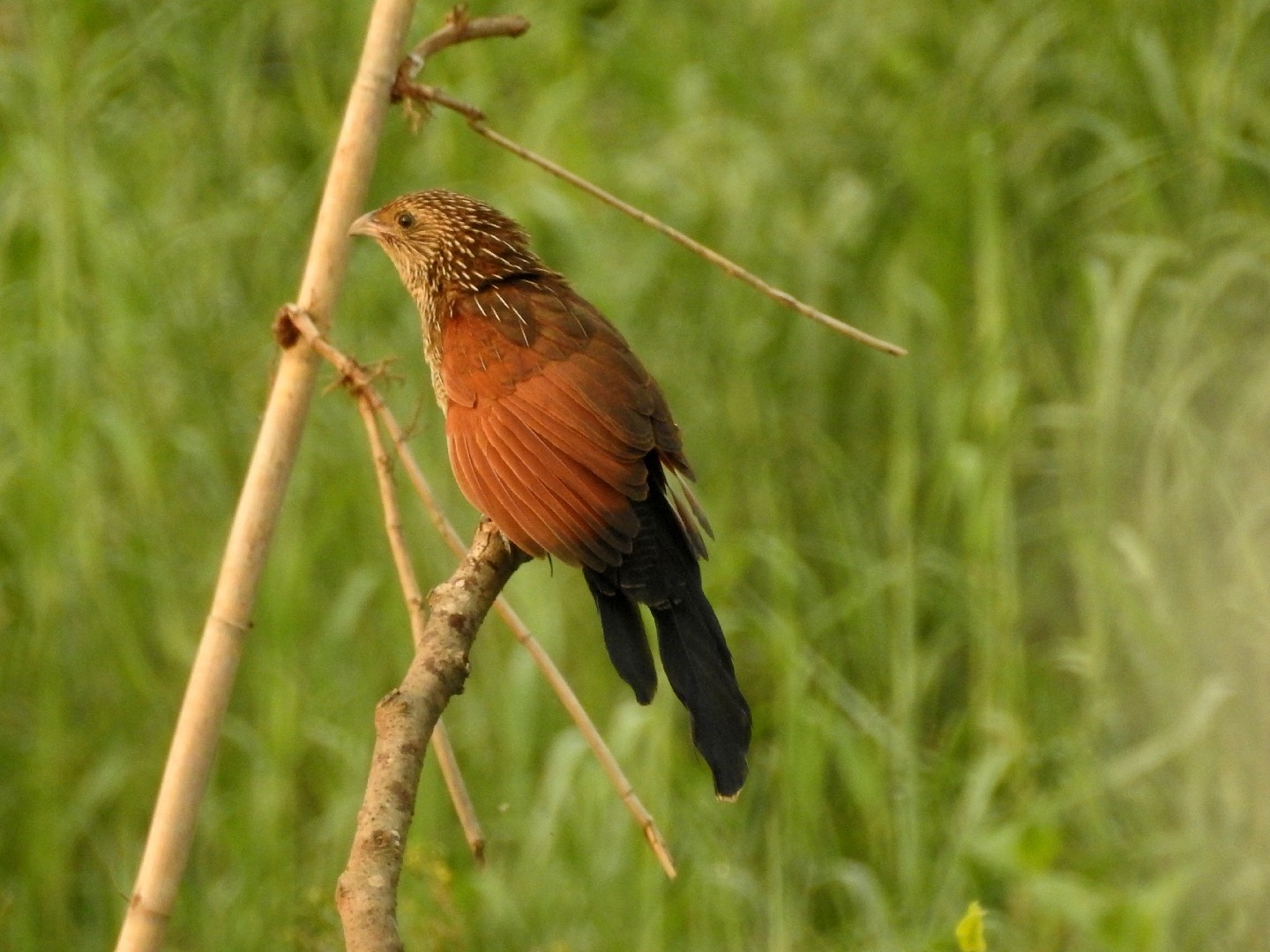Lesser Coucal
A species of Coucals Scientific name : Centropus bengalensis Genus : Coucals
Lesser Coucal, A species of Coucals
Botanical name: Centropus bengalensis
Genus: Coucals
Content
Description General Info
 Photo By Manoj Karingamadathil , used under CC-BY-SA-4.0 /Cropped and compressed from original
Photo By Manoj Karingamadathil , used under CC-BY-SA-4.0 /Cropped and compressed from original Description
This slightly smaller-sized and shorter-billed coucal has a very long hind claw, the longest within the genus. The overall plumage, as in many other coucals, is of a blackish bird with a long tail and rufous wings. They have two plumages, a breeding plumage in which the head and upper back are glossy with dark shafts to the feather and a duller non-breeding plumage in which the feather shafts on the head and back are whitish. The wing coverts also have pale shafts showing as whitish streaks on the brown feathers. The central upper tail coverts are barred and very long. The iris is darker brown and not the crimson red as in the greater coucal. Juveniles have black spots, bars and have a browner colour. 
Size
31 - 34 cm
Colors
Brown
Black
Nest Placement
Tree
Feeding Habits
Lesser Coucal primarily dines on invertebrates, vertebrates, and fruits. It forages on the ground, skillfully hunting prey and utilizing unique adaptations to access a varied diet.
Habitat
The lesser Coucal thrives in a variety of wetland habitats, including tall grasslands, reedbeds, swamps, and marshlands. They are also adaptive to bamboo thickets, secondary forests, and scrublands in agricultural regions. These birds prefer lower elevation areas such as lowland floodplains and valleys, occurring up to 1800 m in the Himalayas, 1500 m in Peninsular Malaysia, and 2000 m on Borneo. The lesser Coucal typically stays low in the undergrowth, often found in more open spaces compared to C. sinensis.
Dite type
Omnivorous
General Info
Feeding Habits
Bird food type
Behavior
The lesser coucal is found singly or in pairs low in the undergrowth in marshy or grassy areas adjoining forest. They appear to be found mainly in lowlands. Like other coucals, they are not brood-parasitic cuckoos. They nest from May to September but mainly after the rains in June in India, building a dome of grass blades on a low tree. The usual clutch is 3 eggs in India, 2 in Southeast Asia and 4 in Taiwan. The calls of the lesser coucal include a series of low double "whoot-woot" or "kurook" notes that increase in tempo and descend in pitch. The Indonesian name of dudut is onomatopoeic. 
Distribution Area
The species is widely distributed west from the Indian subcontinent (but not in Sri Lanka despite an old report of a skin of doubtful provenance) extending east across Southeast Asia. Slight differences in size and plumage are noted in different parts of their range and several subspecies have been designated. The nominate form is found from India to Thailand. Subspecies lignator described by Swinhoe in 1861 is larger and found in southeastern China and Taiwan. Subspecies javanensis described by Dumont in 1818 is smaller and found across the larger islands along the Malay Peninsula extending east to the Philippines. Some island forms are larger and these include sarasinorum described by Stresemann in 1912 and found on Sulawesi, the Sula Islands, Lesser Sundas and Timor. The form on the Moluccas, medius described by Bonaparte in 1850, is the largest. Some other subspecies like philppinensis from the Philippines and chamnongi from Thailand are not always recognized and are thought to form either variants or intermediate plumages. The population patchily distributed in the Western Ghats of southern India may constitute a distinct subspecies. 
Species Status
Not globally threatened.
Scientific Classification
Phylum
Chordates Class
Birds Order
Cuckoos and Relatives Family
Cuckoos Genus
Coucals Species
Lesser Coucal